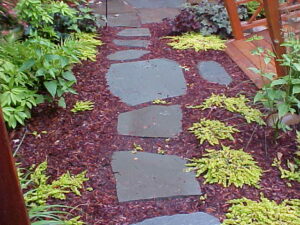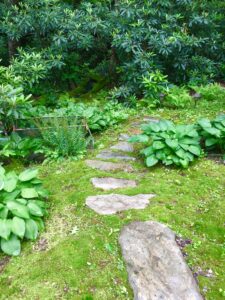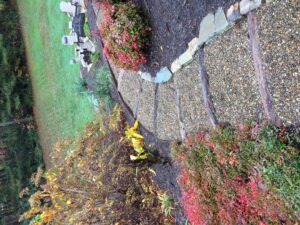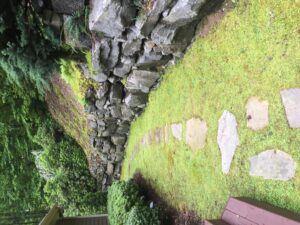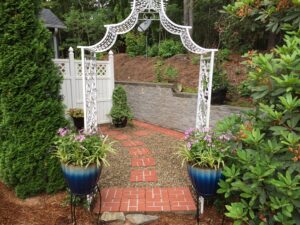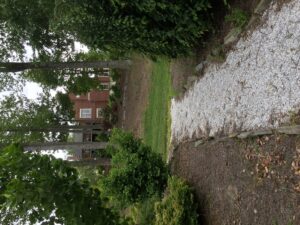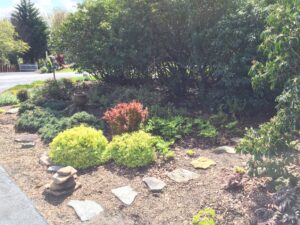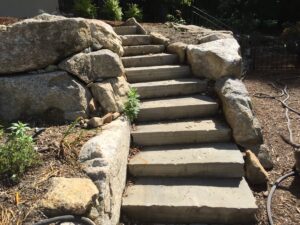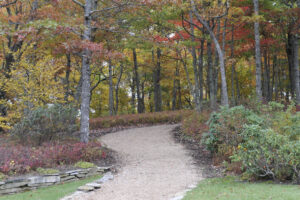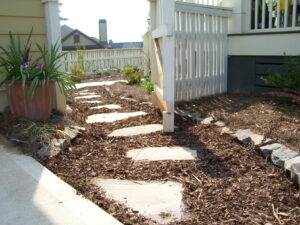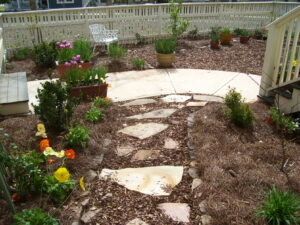Get on the Path to a Great Garden
go.ncsu.edu/readext?931556
en Español / em Português
El inglés es el idioma de control de esta página. En la medida en que haya algún conflicto entre la traducción al inglés y la traducción, el inglés prevalece.
Al hacer clic en el enlace de traducción se activa un servicio de traducción gratuito para convertir la página al español. Al igual que con cualquier traducción por Internet, la conversión no es sensible al contexto y puede que no traduzca el texto en su significado original. NC State Extension no garantiza la exactitud del texto traducido. Por favor, tenga en cuenta que algunas aplicaciones y/o servicios pueden no funcionar como se espera cuando se traducen.
Português
Inglês é o idioma de controle desta página. Na medida que haja algum conflito entre o texto original em Inglês e a tradução, o Inglês prevalece.
Ao clicar no link de tradução, um serviço gratuito de tradução será ativado para converter a página para o Português. Como em qualquer tradução pela internet, a conversão não é sensivel ao contexto e pode não ocorrer a tradução para o significado orginal. O serviço de Extensão da Carolina do Norte (NC State Extension) não garante a exatidão do texto traduzido. Por favor, observe que algumas funções ou serviços podem não funcionar como esperado após a tradução.
English
English is the controlling language of this page. To the extent there is any conflict between the English text and the translation, English controls.
Clicking on the translation link activates a free translation service to convert the page to Spanish. As with any Internet translation, the conversion is not context-sensitive and may not translate the text to its original meaning. NC State Extension does not guarantee the accuracy of the translated text. Please note that some applications and/or services may not function as expected when translated.
Collapse ▲The garden path is one of the most important parts of the home garden. Well designed garden paths guide visitors purposefully around a garden and lead to interesting plants and garden features. The structure paths provide by outlining beds and the sense of space the walks create is an integral part of garden design.
Developing garden paths that provide interest in the garden requires some conceptual thinking. One must consider the views from the walk first and foremost. Paths should meander and bend blocking off some views while exposing others. Paths should be wide enough for two people if possible.
To prevent garden walks from becoming muddy tracks paths should be mulched with some inert material. River pebbles, gravel, wood chips and sawdust are just some of the many choices available to gardeners. It helps to hard pack soil to form paths then cover with mulching material.
Borders of stone, brick or steel edging can be utilized to outline the walks and to keep the path material separated from flower bed mulch. Field stones, logs, recycled bricks are all ‘found items’ that can be recycled into path borders.
Low-growing plants can be planted along and even in the paths to provide botanical interest. Plant for seasonal interest. Below are a select few low growing plants for paths:
‘Candy Stripe’ Thrift – Phlox subulata
‘Pink Chintz’ Thyme- Thymus serpyllum
Creeping Lemon Thyme – Thymus x citriodorus
‘Fire Witch’ Dianthus – Dianthus sp.
Dwarf Mondograss – Ophiopogon japonicas ‘Nana’
Creeping Jenny – Lysimachi nummularia ‘Aurea’
Yellow Moss – Sedum sarmentosum
Lemon Thyme –
Here is a list of cottage garden plants that can be utilized along paths:
Flowers – Agastache, allium, amaranthus, hollyhock, anemone, angelonia, aster, ornamental kale and swiss chard, celosia, chrysanthemum, clematis vine, cleome, smokebush, crocosmia, dahlia, delphinium, echinacea, lilly, poppy, euphorbia, fritillaria, glandularia, hibiscus, ornamental sweet potato, kniphophia, purple hyacinth bean vine, moonflower vine, ornamental gourds, lavendar, sweet pea vine, lupine, lycoris, oxalis, peony, passion flower vine, pennisetum grass, phlox, castor bean, black-eyed susan, salvia, leeks, coleus, goldenrod, thyme, nasturtium, verbena, zinnia
Wildflower seed mix – baby’s breath, dwarf cornflower/bachelor button, five spot, lemon mint, African daisy, sweet alyssum, toadflax, tall cornflower/bachelor button, red corn poppy, lance leaf coreopsis, mixed red poppy, wild cosmos, California poppy, blanketflower, black-eyed susan, wild perennial lupine, purple coneflower, coreopsis, Siberian wallflower, blue flax, scarlet flax, Drummond phlox, sulphur/orange cosmos, gloriosa daisy
Examples of different types of garden paths:





